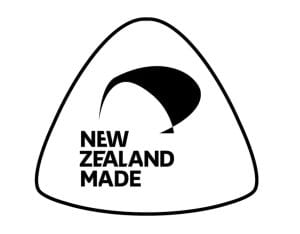A closer look at certification marks and their value to consumers and businesses
Dr Bram Van Wiele, Senior Lecturer in Commercial Law at the University of Auckland Business School, is examining the contentious practice of using pseudo-certification marks on consumer products in New Zealand. Using research data, he hopes to address the issue and preserve the value of certification marks for consumers and businesses.
Most businesses are aware of the importance of registering their trademarks, and they typically register “ordinary” trade marks such as their name, logo and product names. This protection enables businesses to go to court to prevent others from using, for example, a similar word or logo over the same or similar goods if consumers and others are likely to be confused over the origin of the goods.
However, businesses are often unaware of certification marks and the value they bring. Certification marks show that products have been certified by an external body to have specific characteristics that comply with set standards.

Dr Bram Van Wiele
Consider a block of Whittaker’s chocolate. The Whittaker’s logo tells consumers “who” the product comes from, in this case, Whittaker’s. Whereas the Rainforest Alliance logo, the certification mark at the bottom right says something about the “how” or “what”. Specifically, this certification mark signifies that products bearing it have met rigorous environmental and social standards, promoting sustainable and responsible practices. Consumers who see the Rainforest Alliance logo on a chocolate bar, and who know what that logo represents, are assured that the cocoa used in that chocolate complies with the Rainforest Alliance standards and is sourced sustainably, preventing deforestation and supporting the well-being of local communities.
Certification marks, therefore, help consumers with so-called “credence attributes”. Credence attributes are qualities of a product that are not clear to the consumer before or after purchase and consumption. For instance, it is difficult, if not impossible, for consumers to verify the manufacturer’s claims about a product, for example, whether it is genuinely organic, sustainably sourced or gluten-free. Because it is challenging for consumers to verify these qualities, manufacturers are incentivised to misrepresent their products’ traits — traits that play an essential role in the consumer’s decision-making process. In this often confusing and trustless environment, certification marks act as a trust system by signalling that specific traits have been certified against a set standard, enabling consumers to make more efficient and better-informed purchasing decisions.
 For businesses, certification marks are also important trade channels and marketing tools. Certification marks can enable enhanced product recognition, create a framework for cooperation between local manufacturers, and help overcome challenges associated with small size and isolation. Think of the Buy New Zealand Made certification mark, which creates brand recognition by certifying that a product is made in New Zealand. Consumers become more concerned about the provenance of products and are willing to pay a premium if they trust the certification mark.
For businesses, certification marks are also important trade channels and marketing tools. Certification marks can enable enhanced product recognition, create a framework for cooperation between local manufacturers, and help overcome challenges associated with small size and isolation. Think of the Buy New Zealand Made certification mark, which creates brand recognition by certifying that a product is made in New Zealand. Consumers become more concerned about the provenance of products and are willing to pay a premium if they trust the certification mark.
The value of certification marks, however, hinges on their ability to act as a trust system. Consumers must be able to rely on certification marks to verify specific characteristics, which, in turn, depends on the extent to which they can place trust in the certification system. However, evidence shows that businesses are using marks that appear to be certification marks but are not. These “pseudo-certification marks” are not registered and do not comply with the strict rules that apply to certification marks. This practice may significantly affect the ability of certification marks to perform their trust function if consumers cannot tell the difference between certification and pseudo-certification marks.
My current research examines the use of pseudo-certification marks in New Zealand. The aim is to identify the characteristics, prevalence, and severity of the practice of using pseudo-certification marks to inform, if necessary, legal reform. Addressing this issue is crucial because, if ignored, it might ultimately undermine the value of certification marks for both consumers and businesses.
